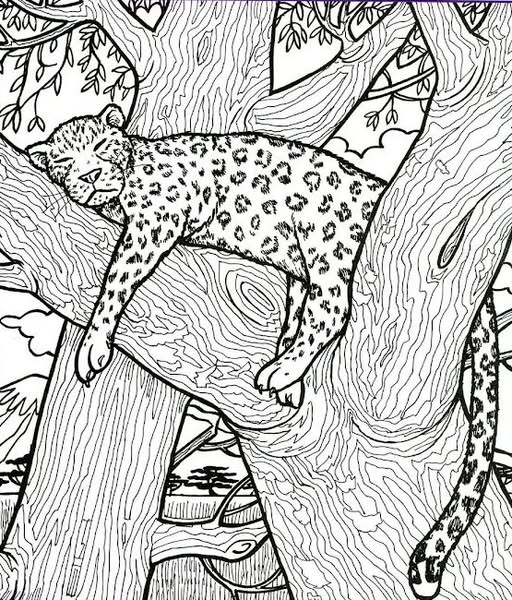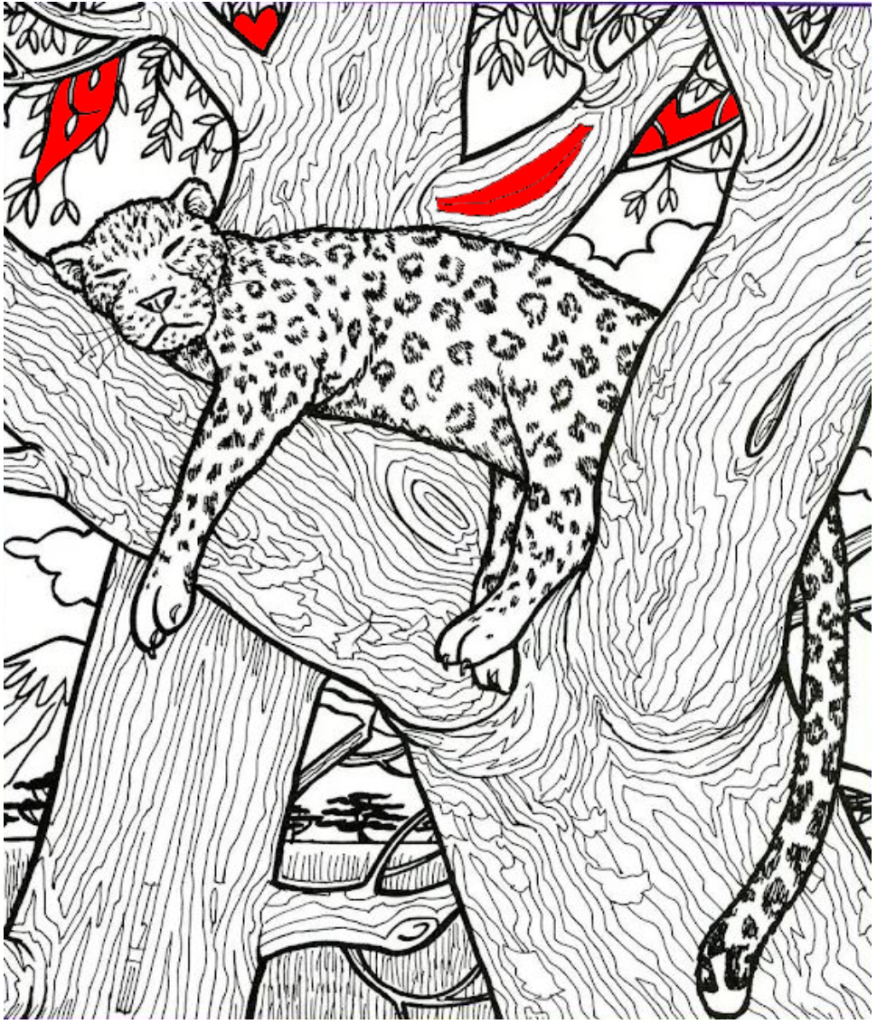Lazy Leopard Siesta: Unwinding the Secrets of Tree-Dwelling Big Cats
The Serene Sight of a Sleeping Leopard
Have you ever stared up at a tree and spotted a magnificent spotted cat draped over a thick branch, fast asleep? That’s the magic of watching leopards in the wild—or even coloring a tranquil illustration of one. In this scene, our leopard has chosen the perfect vantage point, limbs dangling, tail swaying gently below. Beyond its serene beauty, this behavior reveals key insights into leopard survival, habitat preferences, and behavior patterns.

Why Leopards Love Tree-Top Naps
Leopards are the ultimate arboreal acrobats, and snoozing in trees serves multiple vital purposes:
- Safety from Scavengers: High above the ground, leopards avoid rival predators like lions and hyenas, ensuring their hard-earned meals stay off hungry noses.
- Temperature Regulation: Cool breezes filter through leaves, offering respite from the midday sun and stifling heat on the African savanna or Asian forests.
- Vantage Point: From their leafy perch, leopards survey potential prey below—antelope, monkeys, or even unsuspecting birds—ready to pounce at a moment’s notice.
Next time you spot a leopard illustration or video, remember: that relaxed pose is a cunning blend of comfort and strategy.
Anatomy of Arboreal Agility
Resting on a branch might look casual, but it relies on a leopard’s specialized anatomy:
- Powerful Shoulders and Limbs: Muscular forelimbs allow strong gripping and lifting—essential for hauling prey up vertical trunks.
- Flexible Spine: A supple back bends effortlessly around irregular branches, distributing weight evenly for a stable nap.
- Retractable Claws: Sharp, curved claws anchor into bark without dulling, providing secure footholds even on smooth wood.
- Long Tail for Balance: That thick, tapered tail acts like a counterweight, gently swaying to maintain equilibrium on narrow perches.
By understanding these features, we appreciate how evolution sculpted leopards into the perfect tree loungers.

Habitat Highlights: Where Leopards Roam
Leopard distribution spans diverse landscapes—from sub-Saharan woodlands to Himalayan foothills. Yet arboreal habitats share common traits:
- Mixed Savanna and Woodland: Trees scattered across grasslands offer both hunting grounds and resting spots.
- Tropical Rainforests: Dense canopies provide cover and numerous branches for hauling sizeable kills.
- Rocky Outcrops with Scattered Trees: These semi-arid regions still feature solitary trees perfect for midday snoozes.
Irrespective of geography, leopards exploit vertical space to thrive in ecosystems teeming with competition.
The Art of Prey Preservation
One hallmark of leopards: stashing their meals in trees. By lugging antelope or warthog carcasses aloft, they:
- Deter Scavengers: Lions, hyenas, and even vultures struggle to climb, granting leopards exclusive dinner rights.
- Slow Decay: Elevated meat enjoys better airflow, slowing spoilage in humid climates.
- Multiple Feeding Sessions: Leopards can return to the same tree over days, preserving energy for future hunts.
This meat-hoarding behavior underscores the leopard’s reputation as both patient strategist and master climber.

Capturing the Majesty: Wildlife Photography Tips
Want to photograph—or color in—a leopard’s lofty lullaby? Keep these pointers in mind:
- Golden Hours: Early mornings and late afternoons cast soft, angled light, illuminating the leopard’s rosettes and tree textures.
- Telephoto Lenses: A 300mm+ lens lets you maintain distance—leopards are elusive and easily startled—while filling the frame.
- Stealth and Silence: Move slowly, wearing neutral tones, and avoid sudden lens noises. A huff or a twig snap sends your subject leaping to the ground.
- Background Awareness: Position yourself so uncluttered sky backs the leopard, making its silhouette and spots pop against negative space.
With patience and respect for the leopard’s domain, you’ll immortalize that blissful tree-top nap.
Leopard Conservation: Protecting the Tree Princes
Despite their adaptability, leopards face mounting threats:
- Habitat Loss: Deforestation and farm expansion shrink the critical wooded refuges they depend upon.
- Human–Wildlife Conflict: Livestock predation leads to retaliatory killings in many rural areas.
- Poaching and Illegal Trade: Their skins and bones fetch high prices on black markets.
Conservation initiatives focus on preserving mixed-use landscapes, fostering coexistence with pastoral communities, and cracking down on poaching networks. By supporting these efforts, we ensure future generations glimpse the same tree-draped leopards that inspire our coloring pages and wildlife dreams.

Coloring the Leopard: A Creative Guide
Bringing this tranquil scene to life with colored pencils or digital art? Here’s how:
- Base Coat: Lay down a warm golden-yellow tone for the leopard’s body, leaving the belly and inner legs creamy white.
- Rosette Detailing: Use dark browns and blacks to sketch the iconic rosette patterns—each spot cluster should vary in size and shape.
- Shadow Play: Apply a light gray or muted brown under hinged limbs, along the belly, and on the underside of branches to suggest depth.
- Tree Bark Textures: Alternate grays and browns in wavy, concentric strokes to mimic realistic wood grain.
- Leaf Accents: If the scene includes foliage, mix greens with hints of yellow or muted olive for a natural look under dappled light.
By blending realism with creative flair, your colored masterpiece will capture both the leopard’s elegance and the branch’s textured charm.

Conclusion: Embracing the Leopard’s Lazy Majesty
That image of a sleeping leopard draped over a sturdy branch evokes more than cuteness—it encapsulates survival tactics, evolutionary marvels, and the delicate balance of predator and prey. From the muscle power that hauls meat aloft to the conservation challenges threatening arboreal havens, every nuance tells a story. Whether you’re an aspiring wildlife photographer, a coloring enthusiast, or simply a nature lover, let this serene siesta inspire deeper appreciation. After all, in the hush of midday heat, there’s unparalleled wisdom in taking a moment to rest—just like our leopard friend surveying the world from its leafy throne.





